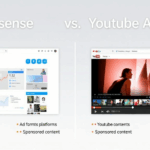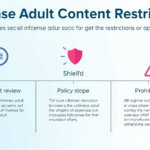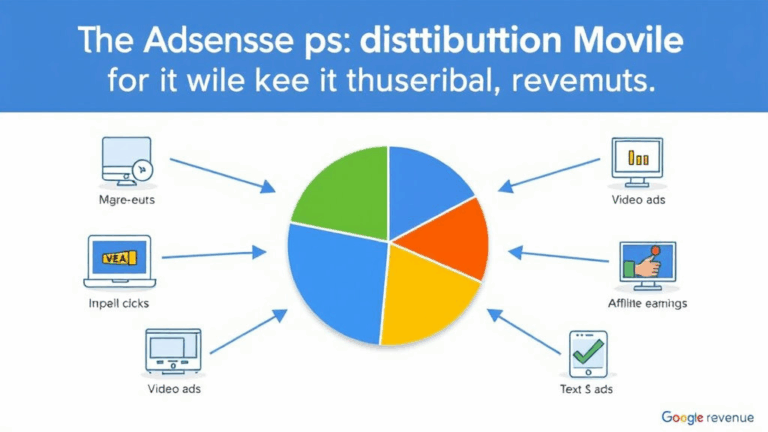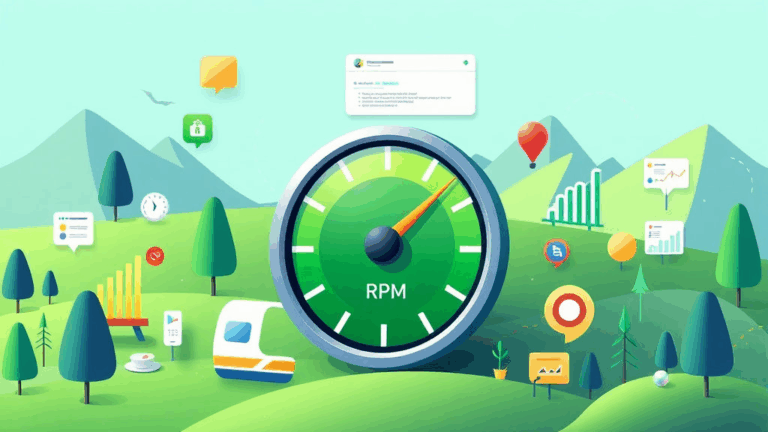When AdSense Thinks Your Blog is Promoting Violence
The Policy Itself is Looser (and Harsher) Than You Think
Google’s official policy on “violent content” sounds clear, but in practice it’s full of squishy landmines. They phrase it like it’s about inciting or glorifying real-world violence, which is obviously fair. But enforcement doesn’t just target hate speech, gore, or war footage.
Weirdly enough, I once got flagged for embedding a YouTube video critical of violent video games. Not violent content itself — a criticism of it. Another time, a true crime blog I helped set up got demonetized just for including autopsy report discussion — no images, just clinical details in text. Both were clobbered under the “Violent or gory” clause. So… yeah.
“Content that describes, promotes, or condones violence against individuals or groups…” is the trigger. That’s subjective. Mere presence of violent topics gets you in trouble, even without intent or glorification.
AdSense enforcement leans heavily on context-free crawling, so the nuance of an article that says “this act was horrific, here’s why” often gets flattened into “mentions violence, deny ad serving.”
Common Content Types That Quietly Violate the Policy
AdSense doesn’t exactly publish a list of banned blog post topics, which makes this even murkier. But from testing, here’s what I’ve seen actually trigger takedowns:
- Policy analysis that includes descriptions of state violence (e.g., police brutality, war policy)
- Historical deep dives with battle scenes or execution descriptions
- Survivalist content involving weapons or prepping for conflict scenarios
- True crime writeups involving how crimes occurred (especially sexual violence)
- News commentary on mass shootings, riots, assassinations, etc.
Here’s the kicker: you can often link to this content and be fine. But embedding quotes or actual summaries tips the balance. The parser apparently doesn’t take kind intent into account — it flags language weight, not ethics.
The Difference Between YouTube-Safe and AdSense-Safe Is Huge
This messed me up badly on a video-to-blog pipeline I had running. We had a YouTube series explaining historical palace coups in a minimalist way — animation included, sanitized narration. Cleared by YouTube’s monetization review. When I transcribed those same episodes for our WordPress blog and tried to run AdSense ads? Instant limited ad eligibility. Every post.
Turns out the AdSense crawler looks for trigger terms more aggressively than YouTube’s API — and unlike YouTube, you don’t get pre-review monetization unless you’re massive. YouTube requires tone, AdSense flags topic. Night and day. In one fun case, a post titled “How the Khmer Rouge Seized Phnom Penh” triggered a full account review. That one title.
Workaround that sometimes works:
Rewording the post titles to avoid conflict verbs (e.g., say “Rise of” instead of “Overthrow”, or “Tactics Used By” instead of “Killed By”) has occasionally helped me clear soft flags. It’s trial and error.
Parsing Crawl Results from “Ad Review Center” is Mostly a Joke
You’d think if your content gets flagged, AdSense would tell you exactly what line, image, or phrase set it off. Nope. You get a vague “limited ad-serving” warning with zero specifics, and a link to the content policy.
But here’s a semi-useful thing I stumbled on: within the Ad Review Center, if you check individual ad requests (when they exist), sometimes the ad label reveals what category got blocked. I once saw a post blocked under “shocking content > dismemberment” — which made no sense because the post was about school zoning wars. Turned out someone dropped a metaphor in the comments: “cutting up the district map like a corpse.” Seriously.
Comment sections matter. And the only reason I figured it out was seeing that phrase in the cached ad crawler snippet shown under “why ads may be limited.” It’s barely documented but occasionally visible.
A Real Bug: Image Metadata Can Trap You
This one drove me off a cliff. I had this post about 19th century medical practices, including an innocuous drawing of a surgical table from a textbook. No blood, no violence, no people — literally a table with straps.
Demonetized for 6 weeks.
I eventually downloaded the serving HTML and image assets to debug manually. Turns out the image I had hosted was originally from Wikimedia Commons, and still had alt-text baked in from that upload: "used in executions". No visual indicator, no mention in post copy, but I hadn’t stripped the metadata. Apparently, AdSense’s image scanner flagged it through that alt tag.
Lesson: Scrub all image metadata. Even if you’re resizing or renaming files, check their alt tags and any title/caption. I now run a quick grep through my local image folders:
grep -rnw ./images -e 'execution|blood|murder|weapon'Just in case.
Undocumented Pitfalls in Translated Content
If you’re running multi-language publishing pipelines — especially from English to Hindi, Spanish, or Tagalog — AdSense treats each translation as a new content object. We realized this after porting some blog posts into SEO-optimized Spanish, and some of them got flagged under violent content rules even though the English versions never did.
The proximity of certain words matters. For example: the phrase “fue asesinado con un cuchillo” was flagged where the English “was stabbed to death” had not been. Same content. But it seems the Spanish model version of the crawler is more aggressive with weapon language.
It’s not in any rollout notes or policy docs, but from what I’ve seen over 20+ posts: some language models lean harder into linguistic cues. English gets more leeway on metaphor. Spanish and Hindi, less so.
Broken Appeals System and the Random Reinstatement Lottery
If you think you can clean a post, reapply, and have a human review it meaningfully — think again. Three times I submitted appeals with heavily rewritten content, and still got the same template rejection.
But — and this is nuts — I later republished an older version of the same post under a new slug and it passed within five minutes. AdSense literally gave ads to a “non-compliant” post I barely changed, because it no longer matched the cached ID they had flagged. This is not documented behavior, but I’ve replicated it twice now. Don’t rely on it, but it happens.
Tips that (sometimes) reduce false flags:
- Avoid direct phrases like “X killed Y,” even in passive voice. Describe results, not actions.
- Don’t repeat the violent term (bombing, shooting, stabbing) more than once per post.
- Careful with quotes from primary sources — AdSense doesn’t care you’re citing history.
- Strip all image title and alt attributes unless absolutely required for accessibility.
- Turn off comments on posts that are borderline — comment text gets crawled too.
- Give articles ambiguous, soft-neutral titles (“Events in Kabul,” not “Kabul Bombing”)
- If translation is flagged, test back-translating it manually to rephrase trigger clauses.
Just don’t expect consistency. If you ask AdSense support about any of the above, they’ll give you boilerplate. The real play is collaborative paranoia and messy testing. Find what weird phrasing gets past the minefield, and keep notes.
When to Use AdSense Alternatives for Sensitive Topics
Honestly, if your blog has a lot of social analysis, history, or commentary that sometimes goes dark — walk away from AdSense entirely. I’ve shifted several projects to private ad networks like Mediavine or Ezoic (with strict filters added) just to get something stable.
They’re still picky, but at least they review your site holistically instead of one scraped paragraph at a time. For stuff like ongoing war coverage or post-conflict reporting, it’s not worth jumping through AdSense hoops for $3 CPMs anyway.
I also saw a team switch to newsletter-only monetization after five consecutive posts were pulled. They made more on direct sponsorships than they ever did from display ads. Might be anecdotal, but… well, so is this entire article.














